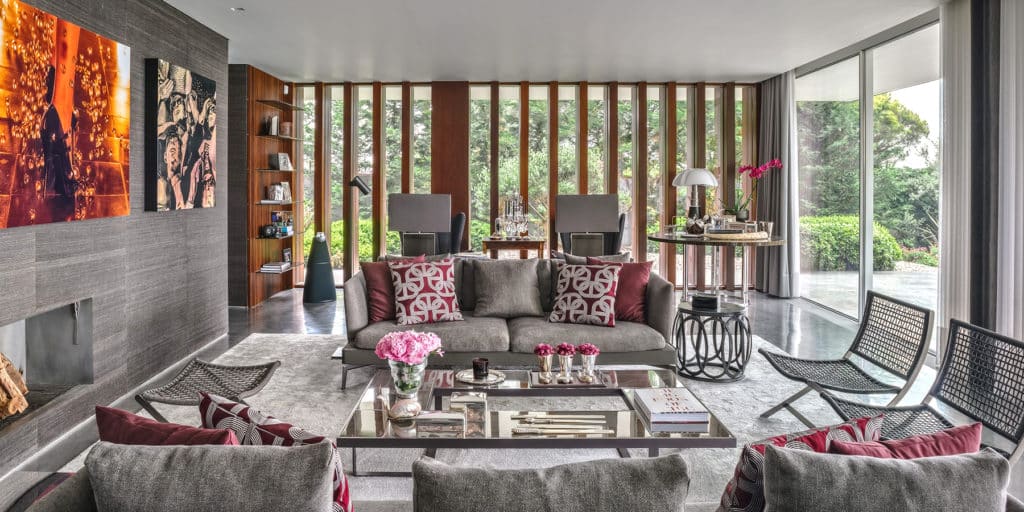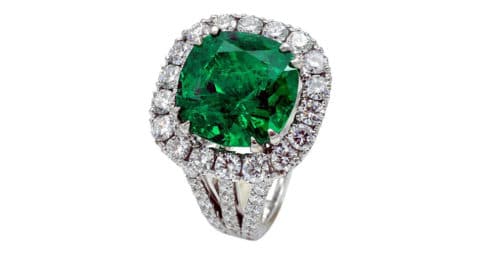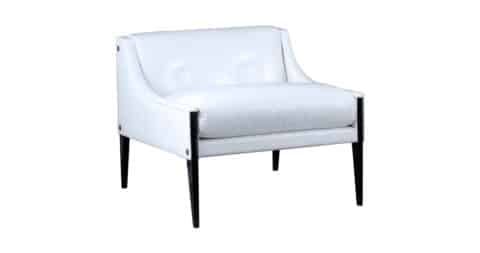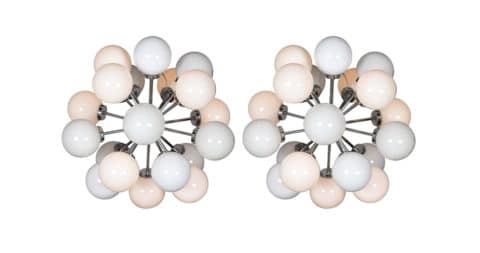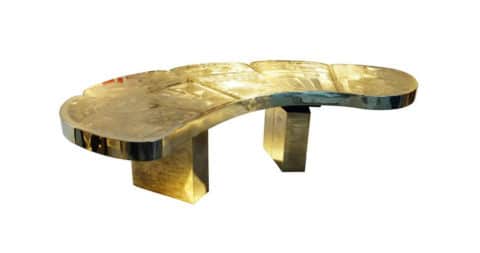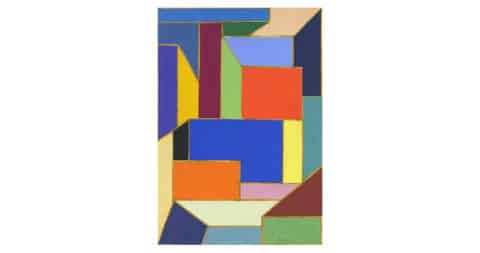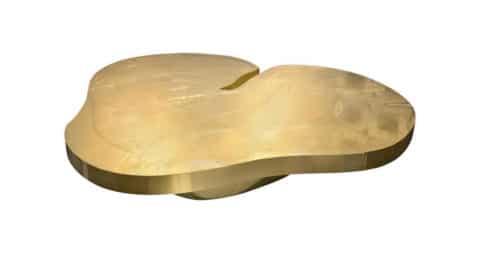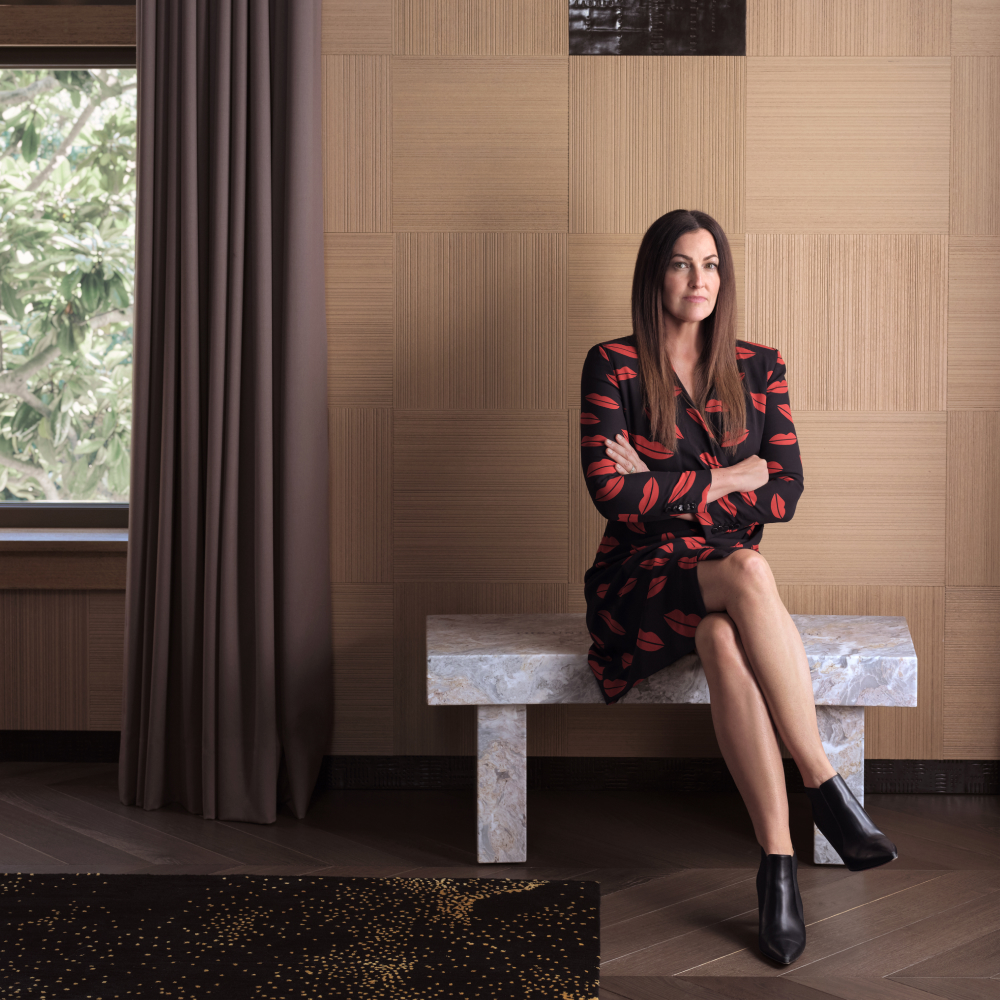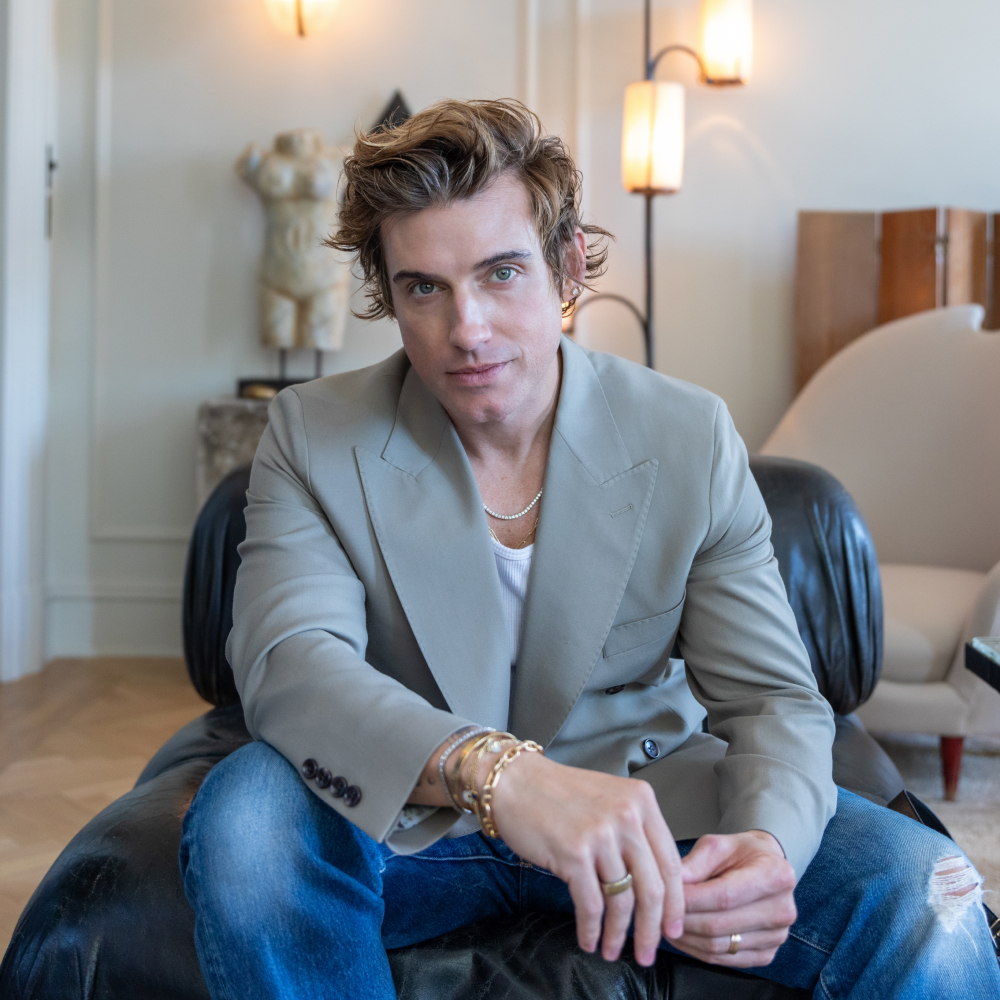
April 17, 2017Through their family’s design firm, Casa do Passadiço, Portuguese sisters Cláudia (left) and Catarina Soares Pereira collaborate on glamorous interiors around the world (photo by Pedro Ferreira). Top: The living room of a home the sisters designed in Estoril, on the Portuguese riviera. All photos by Francisco Almeida Dias, unless otherwise noted
We are contemporary but in no way minimalist,” Cláudia Soares Pereira says firmly. “Definitely not!” adds her sister, Catarina Soares Pereira. “We like calm but not boring.”
Indeed, there is nothing boring, or minimalist, about the elegantly refined, luxurious interiors created by these Portuguese sisters, whose design firm, Casa do Passadiço, is named for the beautiful 16th-century manor house in the northern city of Braga where they grew up. The 18th-century house was in a dilapidated state when their grandfather bought it, in the 1980s, for Catarina Rosas, their mother, who spent two years restoring it before opening her own interior design business. Today, the house serves as a spectacular showcase for the family’s love of fabric, texture, materials and color, and for their commercial and residential work all over the world.
Although Cláudia, 46, and Catarina, 43, studied literature and sociology, respectively, at university, their mother’s business remained the focus of their career ambitions. “There was no possibility of studying interior design in Portugal, and we both enjoyed our university degrees, but we always knew we would join her,” says Cláudia. “Our grandfather was a collector of Indo-Portuguese antiques, and our parents were passionate about architecture and design,” adds Catarina. “When we were younger, we would take family trips to the best museums in Europe, so we grew up in this atmosphere. I think that has had a big influence on our work.”

The glass-walled office in the seaside Estoril residence features a Warren Platner chair and an Atollo table lamp by Vico Magistretti for Oluce from Rewire.
Their mother’s interiors business focused mainly on high-end private residences in Portugal, and the young women learned the details of their trade through experience, absorbing Rosas’s penchant for a subtle mix of antique and contemporary styles. Although their mother still “keeps an eye on things,” according to Cláudia, the business — which employs 12 architects and designers — is now run by the two sisters, who are constantly on the move as they keep up with international projects that range from luxury hotels in Portugal and apartments in New York and Paris to the Aquazzura shoe stores they have designed all over the world.
They took time out during a recent trip to London to talk to Introspective over tea about their style, inspirations and a designer’s real job.
1. How would you describe your style?
Cláudia: I’d say that above all, we really look for a calm and balanced ambience. We love to mix antiques with contemporary pieces, and different eras of design, but we try to keep the feeling very light, elegant and comfortable. It should never feel like you are in a museum, especially if the home itself is an old one. That is very important for us.
Catarina: Proportion and balance are very important, too. So is using quality materials: cashmere, linen, silk, velvet. Even with widely different projects, we try to create an ambience that is timeless. It doesn’t matter whether it is a beach house or a shoe store — it’s important to us that you like it five or ten years from now.

Gervasoni furnishings, again in black and white, fill a bay-side outdoor living room at the Cascais home.
2. Do you design your projects jointly? How do you divide up the work?
Catarina: We are together at every stage of the process, because two heads are better than one! We tend to think in similar ways, which is helpful, but we can also help one another resolve problems that crop up. I’d say I concentrate more on the details of fabric, color and decoration, and Cláudia has more of an architectural eye. She tends to decide on materials — sourcing marble and stone, for example — and the finishes. But in general, our creative decisions about a project are made together. When we are presenting a project to a client, we really try hard to be very unified about our decisions.
3. What is your process after clients approach you?
Cláudia: We usually meet with them several times to understand their expectations, what they need, how they like to live. We visit the space, we see what kind of project it demands. Is it on the beach, in the country, a holiday house, their permanent residence? What are their habits, what kinds of spaces do they need? What kinds of tastes do they have? For the home of fashion designer [and Aquazzura founder] Edgardo Osorio, for example, we wanted something very quirky and creative, as he is. We used a Baroque Portuguese altar in the living room, Vladimir Kagan chairs, zebra poufs. But if we were doing a family house, we would have other concerns. We are mothers [Cláudia has an 8-year-old son and 13-year-old daughter; Caterina a daughter who’s 14], and we understand what a family needs when children are around.
Catarina: When we get to that point, we work on the project, then do a proposal in three-D. It’s rare that we have a specific budget for residential projects, although we do for the shops we design. Most clients give us a blank slate, and we make most of the decisions. If it concerns very expensive antiques or pieces of art, we would always show them first. Usually, though, we would give them the general idea for, say, fabrics, and if they like it, we will make most of the decisions. Sometimes, we have clients who really want to OK every furniture piece and every curtain fabric, but most of the time, it’s a more general brief.
Cláudia: We design a lot of our own furniture because we often need very specific pieces. For example, we did a very big home cinema for a client in Portugal’s Algarve who wanted the room done in ebony, and everything needed to be made specifically. But we also shop constantly for pieces, often on 1stdibs! The important thing for our clients is that we think about every detail, down to the flowerpots.

The existing antique black and white marble floors of Palazzo Corsini inspired the look of the sisters’ projects for Aquazurra. “We have kept the black and white as a unifying feature of all fifteen stores, showrooms and offices,” say Catarina, “but we have tried to make each one very suited to its locale.”
4. Your Aquazzura stores have a very distinctive look, with their signature black and white stripes and bold use of color. How did you decide on that look?
Catarina: The first Aquazzura store we did was in the Palazzo Corsini, in Florence, and it had these beautiful marble squares on the floors and mottled marble walls. We took our inspiration from that, and we also restored the frescoes on the ceiling. We wanted the heritage and tradition to shine through. We have kept the black and white as a unifying feature of all fifteen stores, showrooms and offices we have done for Aquazzura, but we have tried to make each one very suited to its locale. So the London store, with its brass fittings, feels very English. The Moscow store has bright red accents and a Sputnik chandelier. Miami has a more fun feeling, with flamingos in the window and pink-and-green de Gournay wallpaper.
5. What do you like best about your job?
Cláudia: We love our work because it’s always changing and there are always new challenges. But it’s about more than just deciding on colors and fabrics and furniture. In a way, we are like psychologists. We need to know a lot about our clients, whether they are private individuals or corporations, details of their lifestyle or work ethic that they may not even be consciously aware of. Diana Vreeland said, “Give them what they don’t know they want yet.” I think that’s the real job of an interior designer.
